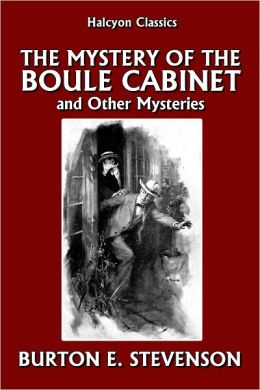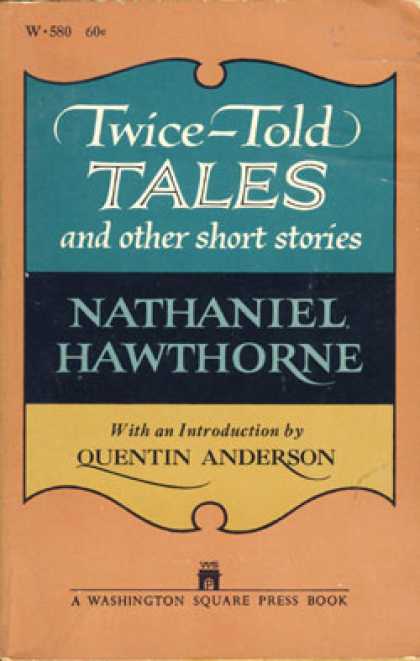James Russell Lowell's (1819-1891) poetical assessment:
Here comes Poe with his Raven, like Barnaby Rudge —
Three-fifths of him genius, and two-fifths sheer fudge;
Who talks like a book of iambs and pentameters,
In a way to make all men of common sense d—n metres;
Who has written some things far the best of their kind;
But somehow the heart seems squeezed out by the mind.
— "A Fable for Critics"
From Poe's review (May 1842) of Hawthorne's TWICE-TOLD TALES:
A skilful literary artist has constructed a tale. If wise, he has not fashioned his thoughts to accommodate his incidents; but having conceived, with deliberate care, a certain unique or single effect to be wrought out, he then invents such incidents—he then combines such events as may best aid him in establishing this preconceived effect. If his very initial sentence tend not to the outbringing of this effect, then he has failed in his first step. In the whole composition there should be no word written, of which the tendency, direct or indirect, is not to the one pre-established design. And by such means, with such care and skill, a picture is at length painted which leaves in the mind of him who contemplates it with a kindred art, a sense of the fullest satisfaction. The idea of the tale has been presented unblemished, because undisturbed; and this is an end unattainable by the novel. Undue brevity is just as exceptionable here as in the poem; but undue length is yet more to be avoided.
We have said that the tale has a point of superiority even over the poem. In fact, while the rhythm of this latter is an essential aid in the development of the poem's highest idea—the idea of the Beautiful—the artificialities of this rhythm are an inseparable bar to the development of all points of thought or expression which have their basis in Truth. But Truth is often, and in very great degree, the aim of the tale. Some of the finest tales are tales of ratiocination.
H. P. Lovecraft had a few comments to make about Poe as a mystery writer in his SUPERNATURAL HORROR IN LITERATURE (1927):
Poet and critic by nature and supreme attainment, logician and philosopher by taste and mannerism, Poe was by no means immune from defects and affectations. His pretence to profound and obscure scholarship, his blundering ventures in stilted and laboured pseudo-humor, and his often vitriolic outbursts of critical prejudice must all be recognized and forgiven.
Poe's tales, of course, fall into several classes; some of which contain a purer essence of spiritual horror than others. The tales of logic and ratiocination, forerunners of the modern detective story, are not to be included at all in weird literature; whilst certain others, probably influenced considerably by Hoffmann, possess an extravagance which relegates them to the borderline of the grotesque. Still a third group deal with abnormal psychology and monomania in such a way as to express terror but not weirdness. A substantial residuum, however, represent the literature of supernatural horror in its acutest form; and give their author a permanent and unassailable place as deity and fountainhead of all modern diabolic fiction.
From a book review by Robert K. Martin (1980) of David Ketterer's THE RATIONALE OF DECEPTION IN POE (1979):
If Poe is widely known as a precursor of SF [science fiction] (a topic which David Ketterer has addressed in two other studies), he is even better known as a precusor of the modern detective story. In Ketterer's view, the detective story in Poe is used to develop the third stage of consciousness, the union of reason and the imagination. He points out that Dupin is as much a visionary as an analyst and that his methods combine an imaginative identification with the criminal and a meticulous examination of the evidence. Ketterer's view of Dupin as a heroic figure seems open to question, especially by those who would link him with Poe's other 'mad' protagonists. Ketterer identifies Dupin with Poe himself and sees the tales of ratiocination as allegories of artistic practice as well as signs of Poe's struggle to reintegrate his own schizophrenic personality.
Arthur Conan Doyle's opinion of Poe:
Edgar Allan Poe, who, in his carelessly prodigal fashion, threw out the seeds from which so many of our present forms of literature have sprung, was the father of the detective tale, and covered its limits so completely that I fail to see how his followers can find any fresh ground which they can confidently call their own. For the secret of the thinness and also of the intensity of the detective story is that the writer is left with only one quality, that of intellectual acuteness, with which to endow his hero. Everything else is outside the picture and weakens the effect.
The problem and its solution must form the theme, and the character drawing is limited and subordinate. On this narrow path the writer must walk, and he sees the footmarks of Poe always in front of him. He is happy if he ever finds the means of breaking away and striking out on some little side-track of his own.
In a letter to Philip Pendleton Cooke of August 1846, Poe seems to have grown weary of his "tales of ratiocination":
You are right about the hair-splitting of my French friend: that is all done for effect. These tales of ratiocination owe most of their popularity to being something in a new key. I do not mean to say that they are not ingenious–but people think them more ingenious than they are–on account of their method and air of method. In the “Murders in the Rue Morgue,” for instance, where is the ingenuity of unravelling a web which you yourself (the author) have woven for the express purpose of unravelling? The reader is made to confound the ingenuity of the suppositious Dupin with that of the writer of the story.
Robert Daniel writes:
. . . in imagining Dupin, he had only to combine three elements that he had already developed in his earlier work: his fancied genius for solving puzzles, the love of paradox that characterizes his reviewing, and the decadent aristocrat (the prototype being Roderick Usher) who dominates the tales of horror and terror. These three characters–Dupin, the Usher-hero, and Edgar A. Poe the critic–are essentially the same personage.
Concerning Poe's innovative narrator (the "Watson") Brander Matthews wrote in his essay “Poe and the Detective Story” (1907):
Upon the preternaturally acute observer who was to control the machinery of the tale the American poet bestowed a companion of only an average alertness and keenness; and to this commonplace companion the romancer confided the telling of the story. By this seemingly simple device Poe doubled the effectiveness of his work, because this unobservant and unimaginative narrator of the unraveling of a tangled skein by an observant and imaginative analyst naturally recorded his own admiration and astonishment as the wonder was wrought before his eyes, so that the admiration and astonishment were transmitted directly and suggestively to the readers of the narrative.
Categories: Detective fiction, Literature













